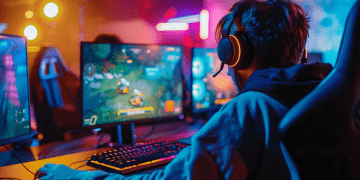Introduction
In the digital world, first impressions are often made through profile pictures. Whether it’s a professional networking site, a dating app, or a social media platform, your display image speaks volumes before you even type a word. But not everyone has the time or skill to capture the perfect shot—or the budget for professional photography. That’s where modern Profile Picture Creator tools come in, offering a surprisingly realistic alternative.
What started as simple filters and cartoon-style avatars has evolved into highly advanced, AI-driven tools capable of generating lifelike portraits. These platforms analyze your facial features, apply natural lighting effects, and even simulate professional studio results—all without requiring a camera. But with so many tools claiming to deliver “the most realistic results,” how do you choose the best one?
This article explores some of the most reliable AI-powered profile picture creators available today, comparing their realism, editing flexibility, and ease of use. Whether you’re a content creator, entrepreneur, or casual user, by the end of this guide, you’ll know exactly which tool can create a profile picture that looks convincingly real—yet perfectly polished.
1. What Makes a Profile Picture Look “Real”?
Before diving into the top tools, it’s important to understand what realism actually means in this context. A realistic profile picture doesn’t just resemble a human face—it conveys authenticity. Here are some key factors that determine realism:
- Lighting and Shadows: Natural light diffusion, soft shadows, and accurate skin tones make a huge difference.
- Texture Detail: Subtle skin texture, hair strands, and eye reflections help eliminate the “AI smoothness” that often gives away generated images.
- Facial Proportion Accuracy: AI models that maintain correct symmetry and proportion avoid creating an uncanny valley effect.
- Emotional Expression: A believable smile or neutral face expression enhances authenticity.
- Background Integration: Realistic profile pictures often have a background that looks naturally blurred or contextually fitting, not artificially imposed.
The best Profile Picture Creator tools balance all these factors through deep learning models, diffusion-based AI image synthesis, and adaptive retouching.
2. The Top AI Profile Picture Creators Compared
Let’s look at some of the leading options available and see which one truly produces the most realistic results.
| Tool Name | Strengths | Limitations | Best For |
| ProfilePicture.AI | Trained on realistic datasets; creates lifelike portraits in various styles | Requires uploading 10–20 images for training | Professionals wanting ultra-realistic images |
| Fotor AI Headshot Generator | Balances realism with retouching; strong lighting simulation | Less customization in background choices | LinkedIn or portfolio photos |
| Adobe Express Profile Picture Maker | Professional-grade color correction and background removal | Limited facial enhancement compared to AI generators | Creatives familiar with Adobe tools |
| Remini AI Photo Enhancer | Best for improving existing low-resolution selfies | Doesn’t generate new photos from scratch | Sharpening and retouching old photos |
| PFPMaker | Simple, web-based interface; strong background and lighting options | Slightly less facial realism compared to others | Quick, clean business portraits |
| Artbreeder | Allows users to morph faces with fine control | Sometimes too artistic or stylized | Experimental or creative portraits |
Each of these tools uses different AI models and image-processing techniques, which leads to varying degrees of realism.
3. Deep Dive: Which One Feels Most Real?
Let’s go deeper into a few standout contenders and see how they compare when realism is the main priority.
a. ProfilePicture.AI – Realism That Rivals Photography
This tool has earned a reputation for producing incredibly lifelike results. It uses machine learning models that analyze uploaded photos to learn your unique facial structure, expressions, and complexion.
Once trained, it generates portraits with realistic lighting, natural skin tones, and fine hair details. You can even choose from different photo “moods”—from professional studio shots to outdoor natural lighting. The tool’s ability to mimic subtle skin imperfections (rather than airbrushing them out) is what makes it particularly believable.
Verdict: The best option if you want a headshot that could genuinely pass for a real photo.
b. Fotor AI Headshot Generator – Balanced and Polished
Fotor’s AI headshot feature strikes an excellent balance between realism and aesthetic enhancement. The tool uses face detection and 3D lighting simulation to recreate natural studio lighting conditions. It also applies gentle retouching—enough to enhance, but not distort.
What makes Fotor stand out is its adaptability. You can adjust the facial tone, background blur, and overall mood with just a few sliders, making it perfect for both professional and casual use.
Verdict: Ideal for those seeking polished yet believable portraits for resumes, LinkedIn, or business cards.
c. Adobe Express Profile Picture Maker – For Creative Control
While Adobe Express isn’t purely an AI face generator, it offers a highly controlled environment for editing and enhancing existing photos. You can remove or replace backgrounds, apply realistic lighting filters, and enhance details using Adobe’s trusted imaging technology.
It may not generate a face from scratch, but if you already have a photo, Adobe Express can make it look magazine-ready without making it look fake. The interface is user-friendly, and results remain consistent thanks to Adobe’s advanced image processing engine.
Verdict: Best suited for users who prefer to refine an existing photo rather than generate a new one.
d. Remini – Breathing Life Into Blurry Photos
Remini doesn’t create new images, but it deserves mention for how well it restores realism to old or blurry ones. Its AI enhancement technology reconstructs facial details with uncanny precision, adding missing texture and improving sharpness.
While it doesn’t simulate lighting or background, its capability to “recover” realism from low-quality photos makes it invaluable for users who already have decent images but want them to look crisp and professional.
Verdict: Perfect for enhancing existing selfies into realistic, high-resolution portraits.
4. The Fine Line Between Realistic and “Too Perfect”
One of the challenges of using AI profile picture creators is avoiding images that look too polished. Over-smooth skin, hyper-symmetric faces, or flawless lighting can make a photo seem synthetic.
The best tools allow for controlled imperfection—keeping human traits like minor asymmetry, freckles, or natural hair flow intact. When choosing a tool, always look for features like:
- “Natural mode” or “authentic filter” settings.
- Options to retain texture and reduce skin retouching.
- Realistic lighting presets instead of artistic filters.
This balance helps your AI-generated photo remain believable across platforms—whether for professional use or personal branding.
5. Real-World Application: Matching the Tool to Your Purpose
Depending on your end goal, the right Profile Picture Creator may differ:
- For LinkedIn or corporate profiles: Fotor or Adobe Express are excellent due to their balance between realism and professionalism.
- For social media or personal branding: ProfilePicture.AI offers more flexibility with realistic yet creative styles.
- For restoring old images: Remini shines in making existing photos look fresh and natural.
- For experimental portraits: Artbreeder allows you to push creative boundaries while maintaining some realistic undertones.
Each of these tools excels in its own niche—what matters most is how authentic you want your image to feel.
6. Future of AI in Profile Picture Creation
AI profile picture technology is advancing rapidly. Modern tools are beginning to integrate emotion detection, context-aware lighting, and 3D model rendering, meaning future versions will be almost indistinguishable from real photography.
Soon, AI could allow real-time facial animation and dynamic lighting based on platform context (for example, automatically brightening a LinkedIn photo or softening tones for dating apps). This evolution will redefine digital identity and how we visually represent ourselves online.
Conclusion
Realism in profile pictures isn’t just about aesthetics—it’s about authenticity, confidence, and making a meaningful first impression. Among today’s available tools, ProfilePicture.AI leads in creating hyper-realistic, photography-grade images. However, Fotor, Adobe Express, and Remini remain strong alternatives depending on your needs and comfort level.
Ultimately, the best Profile Picture Creator is the one that enhances your individuality while preserving your natural look. As AI continues to evolve, the line between generated and real images will keep blurring—but with the right tool, you can stand out for all the right reasons.










